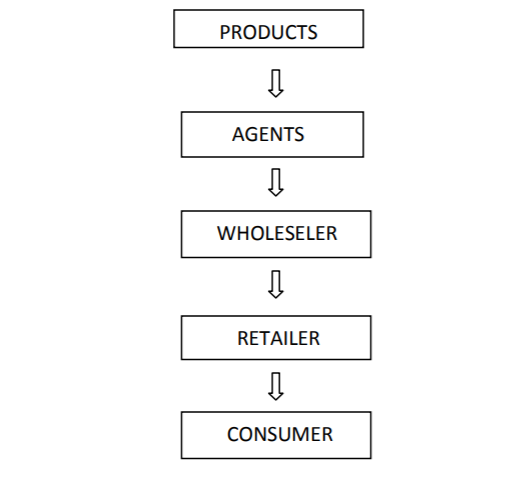If, like me, you are also wondering why you saw a lot of Amul advertisements last year in lockdown 2020, then check out this video below. It was all a part of Amul’s marketing strategy. And this is what we are going to discuss in detail today. First, let’s watch this video.
Amul is just a brand, but it holds a lot of value in Indian society. Amul cooperative was registered on 19 December 1946 as a response to the exploitation of marginal milk producers by traders and agents in small cities.
By leveraging the strength of millions of milk farmers, India has become the largest milk-producing country globally with the help of cooperatives like Amul. Some facts about the milk industry in India: 22% of the world’s milk production, serving as a livelihood of 100 Mn families and contributes 4.5% to the National GDP. Hence understanding the Marketing strategy of the largest milk cooperative in India, Amul, becomes very important.
We – The motivated and devoted workforce of AMUL- are committed to produce wholesome and safe foods of excellent quality to remain market leader through deployment of quality management systems, state-of-art-technology, innovation, and eco-friendly operations to achieve delightment of customers and betterment of milk producers.
Amul
With a mission to reach every nook and corner with its healthy and eco-friendly products across the country, Amul has become one of the leading FMCG organizations in the country. Amul is always a step ahead in its game of marketing. Like any other organization, Amul’s first and foremost priority is to be constantly at the top of the minds of its consumers.
From the newspapers to grabbing headlines across different social media platforms for its witty advertisements based on the current situations to those long banners while driving the car on the streets, the brand is hard to miss. Even if you find a way to escape the above, you’ll find at least one product of this FMCG giant in your kitchen.
So how did Amul became so big, and what is so different about the marketing strategy that it managed to not only get into the hearts of 1.4 billion Indian consumers but even in the hearts of those living abroad?
Umbrella Branding Strategy of Amul
The first and foremost aspect of the marketing strategy of Amul is branding which takes us to the most iconic Amul’s tagline- ‘The taste of India’. The positioning being adopted in the mid-90s, the slogan still remains the lynchpin of the brand. Given the wide product portfolio and likeability of the overall brand, the tagline is not hyperbolic at all!
The idea behind the tagline was to banish the notion that bread and butter are a staple of only the British breakfast. Seeking nationalist views, Amul started using the girl with a polka-dotted dress, with blue hair and an orange face as the company’s icon since it started.
Amul markets all of its products under a single name. Be it milk, cheese, any other dairy product, or even the tasty ice-creams or recently launched rusks/biscuits, all of them lead to the advertising merely costing less than one percent of its revenue.
Since the “Idea of India” is here to last till eternity, the tagline-led positioning of this brand can afford to remain contemporary, topical, and relevant. This is the incantation that all brands try to achieve, at every point in time. Every time, Amul launches a new product, the embedded positioning helps the Brand to Indianize every product idea.
Diverse Product Portfolio
From branding we move on to the second aspect of Amul’s marketing strategy i.e., Amul’s product portfolio. Amul’s variety of products cater to a large audience.
Amul’s primary target audience is the middle and economic class. Even though premium or high-class customers usually prefer brands like Baskin Robins, Naturals, or Häagen Dazs ice-cream, they still don’t look down upon Amul as a cheap brand, for the reason that same customers consume Amul Milk or butter. This more comprehensive product portfolio, rooted in items-of-daily usage, makes Amul a loved brand by the entire strata of the Indian Populace. Amul has a product for everyone!
Amul brand has two faces. Amul is a strong urban brand as far as food and dairy products are concerned. And it is equally strong as a brand that provides very remunerative prices to milk producers across the country.
R S Sodhi, Amul Managing Director
Be it demand for products like Ice-cream or cold milk in summers or be it demand for butter and cheese in winters, Amul dominates the market equally in all the market segments. Amul has products for every season and everyone.
Another pillar of product strategy is integration within Dairy Segment, either forward or backward. And each integration provides a potent & scale-able product idea. In fact, Amul has products that neither come from forward nor backward integration, but they have come from, what we would term, side-ward integration. Example, Amul Buttermilk – which is a by-product of Butter
Also, with dairy being the fulcrum of the portfolio, it ensures robust and holistic quality control, making Amul products the best in their respective categories.

Winning Product Pricing
With the decision to be a brand for the middle and economic class, Amul established one of the best pricing strategies. It opted for a low-end pricing strategy for products that are consumed regularly or where Amul is the market leader. In effect, Amul never abused its market leadership. In summary, Amul’s products are affordable for every segment of society.
Wherever Amul had stringent competition, it always acknowledged the same and had a competitive pricing strategy or a one-on-one offer. Despite this competitive pricing strategy which a consumer enjoys, Amul registered a turnover of INR 38,542 Crore in FY19-20, a growth of 17% over last year in value terms.

Amul’s philosophy is to source at the highest possible price and sell at the lowest possible price. This is entirely different from than procurement-cum-pricing policy for any brand, in the world. Maybe, a cooperative business model gives Amul the freedom to continue to thrive, despite working against the regular flow.
Distribution strategy of Amul
With a well-set product portfolio, pricing strategy, and branding, what also sets Amul apart is its distribution strategy. Amul has always tried to stay ahead of the curve in distribution strategy with its 6000 exclusive distributors.
The brand is actively engaged in modern trade channels like eCommerce and omnichannel retail to maintain the leadership in those channels too. In FY19-20, the eCommerce business has grown by 2X.
Due to such a comprehensive product portfolio, the entire distribution cost gets apportioned, thus, affording them to have the maximum reach, with lucrative ROI for their distributor partners. This is the virtuous circle that will continue to give Amul a competitive advantage for a long time.
Such is the impact of this virtuous circle that Amul launched 33 new Products in the 1st Quarter of FY 21 given the most stringent lockdown in the world. No lockdown could deter any business, that has such a virtuous circle fuelling its top-line momentum.
Amul has a three-tier cooperative structure.
- The village level where the cooperative societies are responsible for producing milk
- At the district level, where we can find milk unions with unique processing centers
- And finally, at the state level, where the milk federations are responsible for overall consolidation.
All of this makes Amul one of the strongest brands in the country to have a wide distribution channel and reach. Following is the distribution channel:

Advertising strategy of Amul
One of the main parts of any marketing strategy is the way an organization advertises. Amul holds the Guinness record for running the longest-ever advertising campaign. The Amul girl, although a bit old now, certainly captures the heart of Amul’s competitors.
This helps them to maintain top-of-the-mind positioning, meaning whenever it comes to dairy, Amul is the one that comes to mind first. The polka dot-dressed girl has been a part of hilarious representations and moment marketing by addressing the current situation and top news with its unique presentation.
It’s a 2-pronged strategy on advertising: Product-specific (Ice-cream, milk, cheese, etc.) and topical, which is a more significant attempt to nurture the umbrella brand. The idea is to keep the brand relevant by relating itself in all the copies with the specific incident. The topical ads are the most talked-about & have always been a collector’s delight.
What makes these topical ads so likable is the fact they always have steer-cleared of frivolity. Hence, the topical ads can also touch upon serious issues like the Indian Army’s sacrifices or the demise of an influential citizen with equal aplomb. This messaging gives maturity as well as felicity to every Indian. This whole aspect ensures that Brand Amul is not just relevant but respected as well.
With several taglines established in the advertising world, such as ‘Amul Doodh Peetha Hai India,’’ Har Ghar Amul Ghar,’’ Pehla Pyaar Amul Pyaar,’ and so on in its short advertisement videos. Every advertisement has made a mark and gives a good representation of what the organization stands for.
Note: The author has published this story in collaboration with Saumil Mehta
-AMAZONPOLLY-ONLYWORDS-START-
Also, check out our most loved stories below

Why did Michelin, a tire company, decide to rate restaurants?
Is ‘Michelin Star’ by the same Michelin that sells tires, yes, it is! But Why? How a tire company evaluations became most coveted in the culinary industry?

Bajaj Auto: The Story of an Indian Born Global Brand
Bajaj Auto has evolved tremendously over time from its traditional scooter Chetak to having the trendiest bike Pulsar. It has managed to stay relevant.

Jio’s Offensive Marketing Warfare: From Challenger to Leader
In just 4 years Reliance Jio has become the Indian telecom market leader due to its marketing warfare strategies. What is this strategy and how Jio used it?

Johnnie Walker – The legend that keeps walking!
Johnnie Walker is a 200 years old brand but it is still going strong with its marketing strategies and bold attitude to challenge the conventional norms.

Flipsters: Creating the Butterfly effect in Indian Startup Ecosystem
How is it that ex-Flipkart employees or Flipsters as they call themselves have achieved such massive success in the Indian Startup Ecosystem?

Nike doesn’t sell shoes. It sells an idea!!
Nike has built one of the most powerful brands in the world through its benefit based marketing strategy. What is this strategy and how Nike has used it?

Domino’s is not a pizza delivery company. What is it then?
How one step towards digital transformation completely changed the brand perception of Domino’s from a pizza delivery company to a technology company?

Why Indians love Old Monk? What is the revival plan of the dying brand?
Indians especially armed forces and college students for generations have loved Old Monk. What makes this rum so special? It’s classy, dark yet affordable.

IKEA- The new master of Glocalization in India?
IKEA is a global giant. But for India, the brand modified its business strategies. The adaptation strategy by a global brand is called Glocalization
-AMAZONPOLLY-ONLYWORDS-END-

















